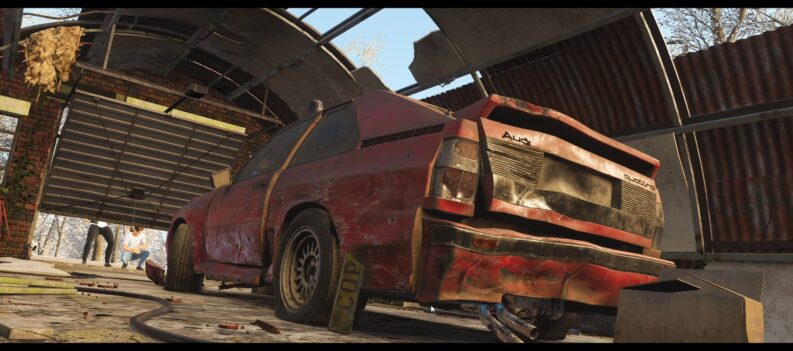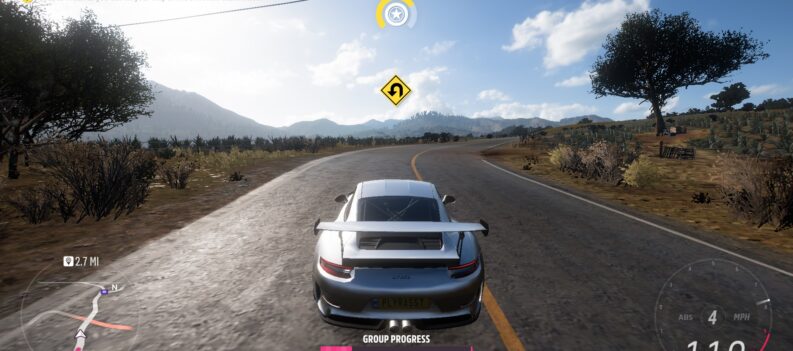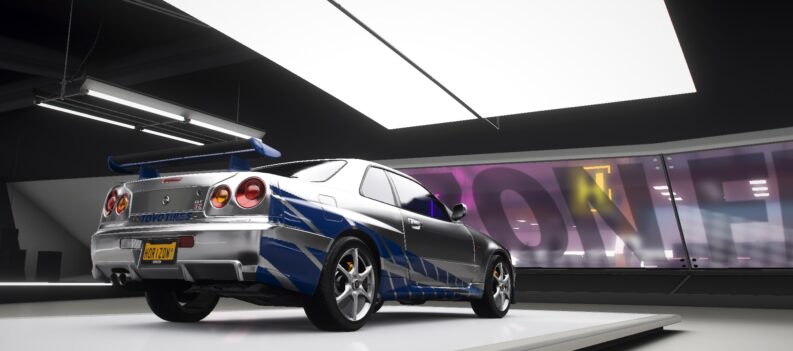We have previously discussed Car Tuning in Forza Horizon 4 in the article: Forza Horizon 4: How to Tune Your Car. In that article, we briefly discussed what each of the tuning and upgrade options does to your car in Forza Horizon 4.

However, newer players should know that simply upgrading parts on their cars is only 70% of the whole process of improving your car’s handling characteristics. Purchasing engine and suspension upgrades in Forza Horizon 4 also unlocks some very important tuning parameters that can help your car behave according to your preferred driving style.
Today we take a look at how newer players should approach tuning different types of cars to further enhance overall performance and drivability.
Engine and Drivetrain Layouts

Over the years, car manufacturers have continued to innovate on the different types of engine and drivetrain layouts. The continuous innovation and diversification had led to the creation of the four different engine and drivetrain layouts we see today.
The five major engine+drivetrain layouts are:
- Front-engine + Rear-wheel Drive (FR Layout)
- Front-engine + Front-wheel Drive (FF Layout)
- Front-engine + All-wheel Drive (F4 Layout)
- Mid-engine + Rear-wheel Drive (MR Layout)
- Rear-engine + Rear-wheel Drive (RR Layout)

FR Layout
The FR layout is the most commonly used layout in sporty driving and competitive racing. Because of how Intertia works, the FR layout gives drivers the most grip when braking and cornering, as well as the best grip when accelerating out of turns. The natural weight transfer from the front to the back compliments this layout beautifully.
The only con with the FR layout is the inherent tendency to oversteer because the rear wheels can spin faster than the front. However, more experienced drivers actually prefer a little more oversteer because they can control the car with the throttle anyway.
Best Example of an FR car in Forza Horizon 4: Nissan Fairlady Z (370Z)

FF Layout
FF is the most widespread car platform in the world. The cheapest commuter cars most likely have an FF layout. The Front-engine, Front-Wheel Drive configuration is the cheapest layout to mass-produce because it requires fewer moving parts and is more straightforward in terms of the overall assembly.
The FF layout carries most of its weight towards the front-end of the car because the transmission and engine are located in the front end of the car. In theory, this layout gives the most front-end grip out of all of the other layouts because of all that weight in front. However, because the front tires are already loaded up with so much static weight, the ability to turn and accelerate is inherently nerfed in FF cars.
Another issue with sporty driving and FF cars is the inherent “Torque-steer” issue where the whole car turns towards the opposite direction of the turn due to the opposing rotational forces from the engine.
Best Example of an FF car in Forza Horizon 4: Honda Civic Type R EK9

F4 Layout
The F4 layout can most commonly be seen in snowy, swampy, or sandy regions because this layout offers the outright grip out of all of the other Engine + Drivetrain layouts. The F4 layout drives all four wheels of the car, which can help the car claw out of any sticky situation whenever one of the four driven wheels is unable to grip the road properly.
In motorsports, the F4 layout provides the most grip during the exit of the corner as all four driven wheels will claw their way out of the turn simultaneously. However, this layout tends to understeer at the entry and middle of the corner because of the inherent weight penalty of the additional parts in an AWD system.
Best Example of an F4 car in Forza Horizon 4: Nissan GTR

MR Layout
The MR layout is a dying breed because of its complexity and high-maintenance and repair costs. The Mid-Engine, Rear-Wheel Drive layout is the most complex and expensive layout to produce out of all of the Engine + Drivetrain layouts. The engine is located just a little bit to the front of the rear axle and almost right in the middle of the chassis.
This layout gives the best weight balance front to rear and the most predictability in terms of handling. The handling characteristics are almost similar to the FR layout but with a little more stability.
Corner entry and exit are beautifully balanced with the MR layout, which gives drivers more confidence to push harder.
Best Example of an MR layout car in Forza Horizon 4: Honda NSX-R

RR Layout
Manufacturers that fully embraced and developed the RR layout are few. Throughout history, only the super-popular people’s car – The Volkswagen Beetle – and the legendary Porsche 911 were the only two successful Rear-engine, Rear-wheel drive cars ever.
Much like the MR layout, the RR layout places the engine towards the back of the car. However, unlike the MR layout, the RR layout places the engine on or behind the rear axle.
There are a couple of pros to doing this:
- Added weight on the rear wheels improve straight line acceleration.
- Added weight on the rear wheels improve corner exit grip.
However, the advantages stop there. Because of how the weight of the car is distributed, along with the natural inertial forces at work when accelerating, turning, and braking, the RR layout almost turns the entire car into a fulcrum. This results in snappy oversteer situations and a light front end feel when turning the car mid-corner.
Straight-line acceleration and corner exit are where this layout shines the most. The added weight towards the rear provides unparalleled grip during acceleration.
How to tune the different layouts
We went into a deeper-than-intended discussion about the pros and cons of each layout so that you can understand how to enhance or dampen the pros and cons of each layout respectively.
However, you will have to understand that while the different layouts have “inherent flaws” not all cars of the same layouts will have these flaws from the factory.
Some more nicely sorted out cars, such as the Honda NSX-R, handle beautifully in stock form. The balance between power and its stock suspension settings complement each other nicely to create a very predictable and enjoyable driving experience. Changing anything engine and suspension-wise almost feels like blasphemy towards the car’s designers: Masahito Nakano and Shigeru Uehara.
At the end of the day, though, no one is stopping you from creating a 700-horsepower monster NSX-R; if that’s your cup of tea. However, you will have to compensate for all that added power and speed with some suspension setup.
To access the tuning menu:
- From the main menu, click on “Cars”:

2. Click on “Tune Car”:

3. All of the adjustable parameters of your current car can be changed here:

Note: You cannot change any of the following settings if the corresponding parts are not yet upgraded/adjustable.
FR Layout General Suspension Changes
Because of the FR layout’s inherent tendency to oversteer, we can:
- Soften the Rear-antiroll bars
- Soften the Rear Spring-rate
Of course, the overall balance has to be set relative to the front end of the car. So adjust the rear, and then adjust the front end to give your FR car the best balance between front-end responsiveness and reduced oversteer.
FF Layout General Suspension Changes
Because of the FF layout’s inherent tendency to understeer, try these settings:
- Increase front spring-rate
- Soften rear anti-roll bars
- Soften rear spring-rate
This setup will reduce the amount of front-end dive during braking and help keep tire contact on the road. The reduced rear spring rate and anti-roll bar values can help FF cars “rotate” around a turn better.
F4 Layout General Suspension Changes
F4 cars tend to understeer during corner entry. Try these settings:
- Stiffen Front Anti-roll Bars
- Change Front Spring Rate to same with rear or softer
- Change Brake bias towards the rear
- Reduce Accel and Decel on the Differential by 10%
These changes will turn any AWD car into more like an FR car. However, the benefits of having four driven wheels should still be taken into account. With this in mind, these settings can help eliminate the sluggish and unruly behavior of AWD during corner entry but still allow the driver to take advantage of the corner exit grip that the F4 layout provides.
MR Layout General Suspension Changes
MR cars are generally well-balanced already. However, if you prefer to gain more control by inducing understeer, then try these settings:
- Soften rear Anti-roll bars
- Soften rear Spring-rate
Most MR cars in-game can benefit from a softened rear anti-roll bar and spring, which would reduce oversteer and make the car more controllable during acceleration.
RR Layout General Suspension Changes
RR cars can be a little twitchy during corner entry and exit. However, these can be slightly remedied by applying these settings:
- Soften rear Anti-roll bars
- Soften rear Spring-rate
RR cars tend to become twitchy during the braking-accelerating transition because of how the weight transfers from front to rear. Taming the natural tendency of RR cars to oversteer can help you set faster lap times and lay the power down to the ground better.
The Tuner’s Rabbit Hole

Most of the available cars in Forza Horizon 4 are generally well-mannered and predictable. However, because the developers wanted to highlight the real-world tendencies of these high-performance cars, some of the handling characteristics of some cars in Forza Horizon 4 can be somewhat exaggerated from their real-world counterparts.
With this in mind, we hope that, by gaining a better understanding of the natural tendencies of the different engine-drivetrain layouts, you can adjust and compensate by changing suspension settings accordingly.
















